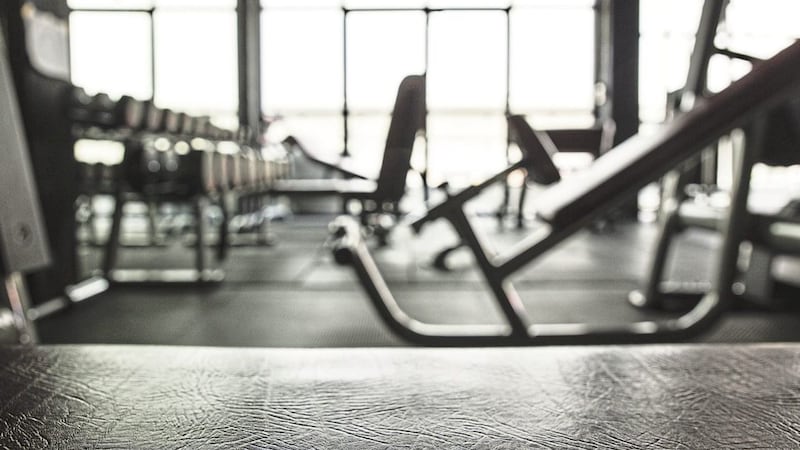It is probably a subject in which my esteemed colleague Enda McGinley has much more expertise.
I was scanning through my daily review of the newspapers’ sports sections and one headline caught my attention: ‘Injury crisis every weekend suggests rugby has reached breaking point’.
Week by week professional rugby squads are being decimated by three or four major injuries, with long lay-offs an unfortunate consequence. Add that to the concussion rate in the game and the sport is at breaking point.
Ahead of this year’s earlier-than-usual Gaelic season be ready for our own share of bad news with the time constraints placed on squads not aiding injury prevention.
The big word in club and county football is ‘prehab’, but what is it?
Well, 50 years ago prehab was helping to read up at home, milk the cows and get the dinner before walking over to the field for training.
Two laps and a match later, there were no such things as hamstrings.
You walked home.
I remember almost 20 years ago, as a 16-year-old, training and serving my time with Saval senior team. Cathal Digney was manager at the time (he also happened to be one of the best footballers never to have won an All-Ireland medal with Down, having captained them in the 1970s).
He had a large farm on which we waited one warm summer evening in anticipation that the cones would soon be laid out for 200-metre runs and then a match.
Cathal arrived late, I suppose in a bit of a tizzy.
“Right lads” he said. “Follow me.”
So 15 players hopped onto the back of the trailer.
Cathal had one of the first four-wheel tractors at the time and pulled us the short distance from the playing field to his farmyard.
Fifteen minutes later the squad were lifting his hay bales into the trailer and others were strangling the chickens who were housed in one of Moy Park’s finest at the time.
For those who live in the country, nothing gets in the way at silage time. The lifting of hay bales was as good as the modern-day weightlifting and core training. It was the farmers ‘prehab’ at the time.
Fast forward to modern-day prehab. To give you an example, I know of one club which has recently purchased 10 Assault Air Bikes, as well as five racks and the weights to go with them. Their prehab begins with weightlifting, stretching, physio work and a warm-up, before even putting their boots on to go outside and train. This is at club level remember. I know there are county teams that are much more sophisticated.
I am also sure that this particular club rivals many county teams, but this highlights the amount of investment, preparation and work going into preparing football and hurling teams at elite level.
Currently, I would say the number of injuries being sustained at club and county level is becoming dangerously close to chronic. Ask our club secretaries who are tasked with recouping the costs of minor and major operations from the insurance companies and ask our players who are out of work and pocket after sustaining such debilitating injuries.
Gareth Davies, the Welsh Rugby Union chairman was recently quoted as saying of the professional game:
“It will certainly not get any better. When I played no-one tore biceps of hamstrings off the bone, no-one had stinger injuries, and what is happening is a player’s muscular set-up is not natural while your ligaments and bone structure remain the same. It is the load that causes the problems. Players are bigger than their bodies are designed for them to be and a lot of the injuries are because of that, not just because of the physical demands of the game.”
Does this sound familiar?
Cruciate ligament injuries are the blight of Gaelic football, closely followed by long-term hamstring problems. Coaches have, in the recent past, been particularly pre-occupied with weight training.
Slowly, though, they seem to be moving away from heavier weights and endless repetitions to more functional movements, in an attempt to recreate game conditions.
Davies had a point when he described modern rugby players as having muscles bigger than their bodies were designed to carry. Even with the expertise of the game’s conditioning experts the statistics in injury prevention have not improved.
Davies’s solution is to drop the number of players from 15 to 13. (If I am right a similar rule was trialed during the National League in the 1990s.) There is no way of predicting the success of this approach but following a similar trend in Gaelic would allow the frequency and severity of injuries to be assessed. In addition, having fewer players would reduce the amount of defensive cover available to tacticians and indirectly ‘open-up’ the game, which in turn would lead to a greater number of substitutes.
The authorities in Croke Park have been boldly experimental with the rules. I agree that possibly too many elements in football and hurling have changed annually but, then again, the GAA have been too slow to act in the past so change has been necessary.
It is worth taking another look at reducing the number of players, though, if only to ensure the headlines don’t describe Gaelic Games as being at ‘breaking point’.
Injuries are a natural consequence of sport. however, we have to accept that the game has changed and so perhaps we need to change the rules to reflect this.
Less is more.
